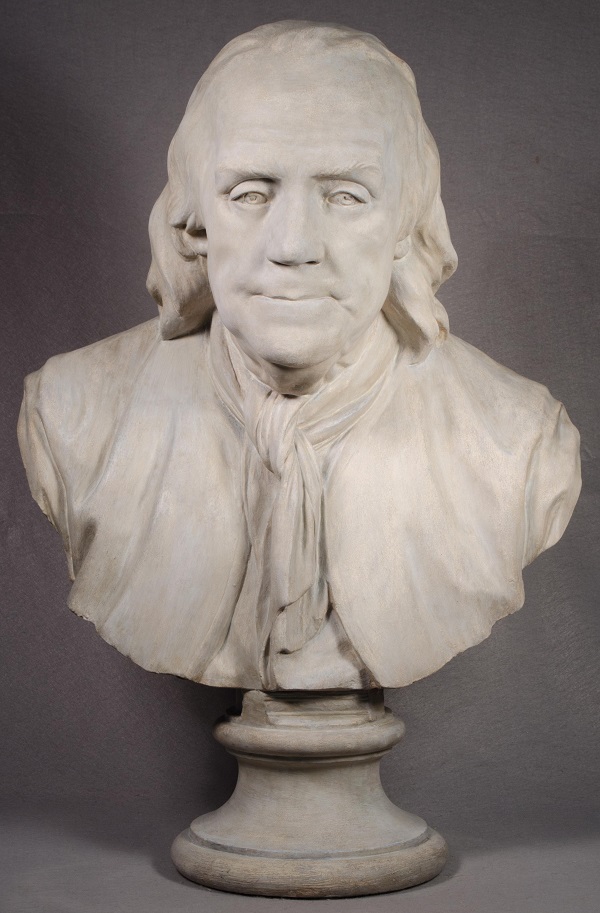Art & Artifacts
Discover the Library Company's Art and Artifact Collection
Distinguished Sculptors
Jean-Jacques Caffiéri
French sculptor, Jean-Jacques Caffiéri (1725-1792) became well-known for his realistic portrait busts of his contemporaries. Caffiéri came from three generations of bronze workers and sculptors, all originally from Italy. In 1748, he won the Prix de Rome and studied classical sculpture there for four years. Upon his return to Paris, Caffiéri became the sculptor to King Louis XV. In addition to designing ornamental metalwork for the Palais-Royal (including the famous staircase), he crafted a series of busts of dramatists, for which he gained much prestige.
Jean-Jacques Caffiéri (1725-1792).
Benjamin Franklin, ca. 1779-1784.
Plaster.
Library Company of Philadelphia. Gift of Walter Franklin, 1805. Photograph courtesy of Linda Lennon Objects Conservation.
Jean Jacques Caffiéri, Bust of Benjamin Franklin
Reputed to be the most authentic representation of Benjamin Franklin, Caffiéri’s bust is a studied expression of Franklin’s noble strength. According to his grandson, Franklin solicited Caffiéri for a likeness in 1777; Caffiéri, so struck by Franklin’s good nature, set out to capture the “aspect of integrity and authority that derives from [Franklin’s] knowledge, virtue, and nobleness of the soul.” Another sculptor, Jean Antoine Houdon, created a similar portrait a year later, and the two pieces became rival “Franklins,” as each artist competed for patrons. However, Franklin always claimed the Caffiéri sculpture as the superior, and he retained only this version, giving away all casts of the Houdon. The accurately poised portrait eventually became the model for the statue which stands in the façade of the Library Company’s building. Caffiéri’s bust came to the collection in 1805 from Walter Franklin, the son-in-law of Benjamin Franklin’s associate Samuel Rhoads.
